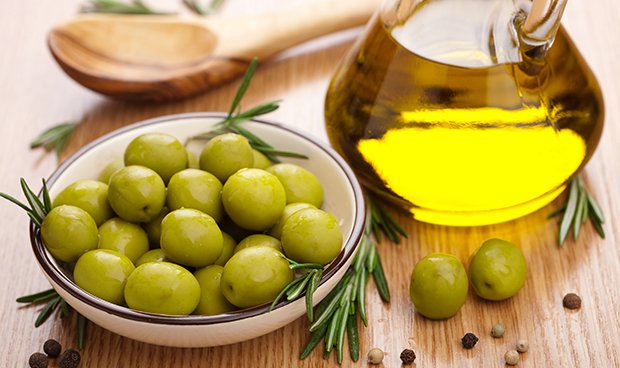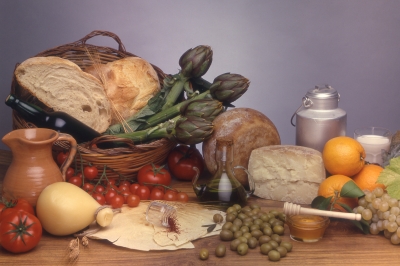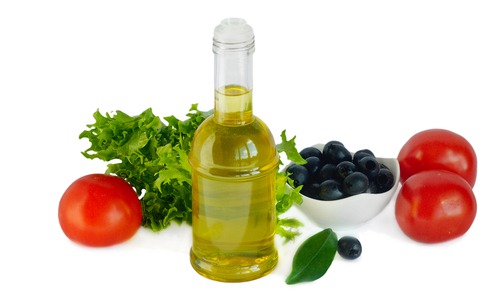Characteristics of Cretan and Mediterranean diets


The Mediterranean Sea washes the shores of 21 states where food traditions differ from country to country but there are many common characteristics to all of them. These common characteristics reflects the Mediterranean diet, which is also a cultural phenomenon belonging to the Mediterranean way of life, and this type of nutrition has been recognized as optimal for maintaining health and longevity.
Where does this diet come from? When was this first formulated?
American scientist, physiologist Ancel Benjamin Keys and his colleagues conducted systematic research on the relationship between lifestyle, nutrition and heart disease in various population groups in 7 countries around the world in the 50s of the XX century. They drew attention to the fact that the Greeks, mostly residents of Crete, are less prone to chronic diseases than other people, and their life expectancy is higher. Ancel Keys put forward his assumption known as the diet-heart hypothesis: reducing fat in the diet reduces blood cholesterol levels and thereby the risk of cardiovascular disease.

Keys studied in detail and tried himself the cuisine of the inhabitants of Crete. Probably, it laid the foundation for the diet he followed for the rest of his life. Notably, Keys lived to the age of 100 years (1904-2004). Of course, it is impossible to say with certainty that such a long life is a consequence of only the Mediterranean diet, but in any case, he and his wife Margaret went down in history as the founders of a diet that can resist inflammatory processes in the body.
The Keyses were exactly, who first coined the term “Mediterranean diet”. Initially, the diet relied only on the cuisines of Greece, Turkey, Italy and Spain. In the following decades, it included other Mediterranean cuisines, in particular the ones of the Levant and North Africa.
Cretan food (diet)
The secret of a healthy diet for the inhabitants of Crete lies in the ideal ratio of different fatty acids and the use of local seasonal products. Since ancient times, Cretan cuisine has been based on olive oil, a variety of herbs, vegetables and fruits, fresh fish, cereals, legumes, walnuts, a little cheese, wine and less meat-based diet.
There are characteristics of the Cretan diet below:
Cretan olive oil has a proven quality:
https://thenewgreece.com/kitchen/оливковое–масло–крита–это–качество/
There are no continuous housing systems for cattle in Crete, only mountain pastures-based systems (https://thenewgreece.com/nature/possessors-of-cretan-soil/). They eat a lot of curd white feta cheese, made from a mixture of sheep (60%) and goat’s milk (40%).
Cheese in Crete:
https://thenewgreece.com/kitchen/how-they-make-cheese-on-crete/

Red meat is rarely consumed, much less often than fish and poultry. In Crete they eat game, rabbit meat, beef, lamb and young goat meat.
The most delicious lamb in Crete:
https://thenewgreece.com/kitchen/the-most-delicious-lamb-dish-in-crete/
According to studies, the Cretan eats four times more of them than the average resident of Southern Europe.

For centuries, the way of life has made crackers, but not soft bred an integral part of the Cretan food system.
Paximathia – traditional crackers:
https://thenewgreece.com/kitchen/traditional-cretan-hard-bread-calls-paximathia/
Until the middle of the 20th century, the legumes were the main food of the poor and the basic food product of most Cretans living in villages.
Fava (yellow split peas):
https://thenewgreece.com/kitchen/фава-φάβα/
Very many dishes are served with fresh herbs and a lot of natural spices.
Cretan spices and herbs:
https://thenewgreece.com/nature/one-more-gift-from-crete/
In Crete, people eat slowly and measuredly, in a calm atmosphere. After eating, rest is required for the full assimilation of food. Local seasonal fresh food is preferable. Nobody cooks for the future. Active lifestyle, lots of work and walking in mountainous terrain.
Are Cretans not Greeks?
https://thenewgreece.com/unknown-crete/are-the-cretans-not-greeks/
A variety of food is not limited to a few sources. Herbs, they are about a hundred and a dozen varieties of seafood. A typical dish of Crete is «chochlioί” – snails. (Χοχλιοί, https://thenewgreece.com/kitchen/snails/). Cretans love a variety of dishes: moussaka – a kind of pie with lamb, eggplants, potatoes and tomatoes; the famous dakos – a combination of barley rusks, olive oil and salt. A remarkable detail: almost all dishes of the island cuisine contain lemon juice or its zest. Cretan soups are more like stews because they are very thick.
“Magic” Hippocrates soup:
https://thenewgreece.com/interesting/magic-hippocrates-soup/
Extremely low sugar intake: sweets not every day. They like nuts, dried fruits, raisins. Dried fruits are the most important traditional sweet for the inhabitants of Crete.
Cretan sultanas:
https://thenewgreece.com/kitchen/cretan-raisins/
One of the features of the Mediterranean diet, especially of the Cretan one, is fasting. The Cretans conscientiously observe Orthodox Christian fasting and practice it 180 to 200 days a year.